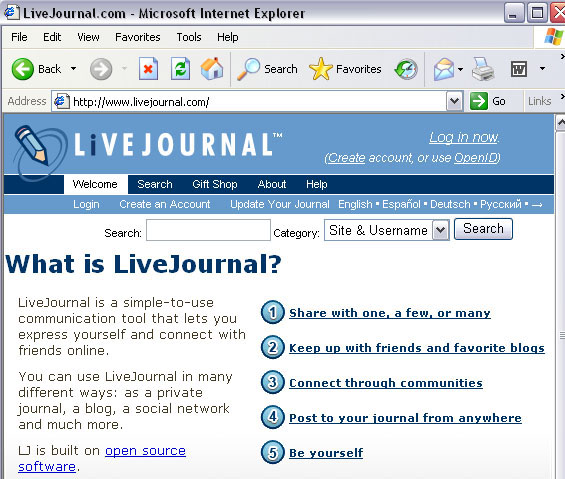
The History of Blogging
Before social media, there was the blog. In the early days of the internet, a “blog”, short for weblog, was barely more than a personal online diary. Its aesthetics were unappealing, like the digital equivalent of your childhood drawings, but at the time they were revolutionary. People now had an outlet to share their thoughts, rants, cat pictures and celebrity gossip to a large audience, which was impossible pre-social media. Fast forward 24 years and blogs have turned into powerful marketing tools wielded by businesses and influencers alike.
In the early ‘90s, online record keeping was limited and many early blogs are now lost. However, The New York Times Magazine credited college student Justin Hall as the founder of blogs with his 1994 site links.net, where he shared HTML examples. In 1998, Bruce and Susan Ableson launched Open Diary, allowing people to comment on posts. Blogger, LiveJournal and Xanga followed in 1999. As the internet matured, so did its blogs. There were blogs for fashion, tech, travel and everything you can think of. Influencers emerged, began dictating trends and became the go-to source for niche expertise and stylish inspiration.

But I’d like to focus on the 2000s, a tumultuous yet fascinating time for gossip and celebrity-focused blogs. “Let’s Get The pAArty Started!” Perez Hilton wrote in a 2007 headline about Lindsay Lohan. Elaine “Lainey” Lui’s Lainey Gossip featured equally controversial content regularly, calling out Jessica Simpson’s “white trash abuse” — and that was among some of the least offensive. Blogs revealed celebrity secrets and made harsh accusations that damaged reputations. Comment sections became influential battlegrounds.
The Future of Blogging
Just as personal blogs shaped popular culture and media, businesses began recognizing their potential. In 2024, 85% of business-to-consumer (B2C) companies and 91% of business-to-business (B2B) companies used blogs. They transitioned from quirky personal pages to sophisticated business tools, driving traffic, generating leads and building brand authority.
Blogs as Business Tools:
Almost four out of five marketers name blogging as their most effective strategy for content marketing. If you’re a Momentum Communications Group client, you know any opinion piece that’s too self-promotional is rarely placed in any reputable media outlet. Blogs don’t have that restraint. So what can you do to make your blogs stand out?
Develop Your Content Strategy:
Here are key points to consider:
- Determine who you want to reach with your blog. Are they potential donors, clients or volunteers? Knowing your audience helps tailor your content to their interests and needs.
- Clarify the core message you want to convey and ensure it aligns with your organization’s overall goals and mission.
- Align your content strategy with your short-term organizational goals, as well. For instance, if your goal is to increase donations, create content highlighting your work’s impact and how donations contribute to your mission.
Consider SEO Best Practices:
Optimizing your blog for search engines is critical to increasing visibility and driving traffic. Here are some SEO best practices to keep in mind:
- Consider what questions your audience might search for on Google and ensure your blog answers those questions. For example, when searching for nonprofit blogging tips, I immediately ended up on Classy’s blog post titled Blogging for Nonprofits: Tips From Content Professionals.
- Blog posts that are 2,000+ words tend to perform best in terms of SEO and social sharing. Long-form posts (3,000+ words) generate more than 75% more backlinks and 9 times more leads than short-form posts (500 words or less). Longer content provides more value to search engines and is more likely to rank higher on search engine result pages.
- Pro Tip: Only write long blog posts if you have valuable content to share throughout. Every sentence should serve a purpose to your readers.
- Websites with active blogs have 434% more indexed pages and 97% more inbound links than those without blogs. Regularly updating your blog with fresh content can significantly improve your website’s reach.
Engage Your Audience:
- Understand who your readers are and what content resonates with them. This could include donor stories, impact reports or educational pieces about your cause.
- Use storytelling to connect emotionally with your readers. Share first-person stories from beneficiaries or highlight significant achievements to create a deeper connection with your audience.
- Ensure your content is valuable and informative. For example, if you’re targeting donors, showcase the impact of their contributions through detailed reports or personal stories from those you’ve helped to prove their investment makes a difference.
For nonprofits, a well-executed blog can engage donors, increase visibility and demonstrate impact. By developing a clear content strategy, following SEO best practices and consistently engaging your audience, your blog can become an essential part of your communication strategy.
